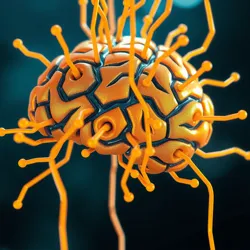Living Circuits

Living Circuits are an innovative integration of biological systems and electronic components, creating dynamic networks capable of interacting with both organic and synthetic environments. These circuits are at the forefront of research in the fields of biotechnology, cybernetics, and transhumanism, offering potential advancements in medicine, communication, and human augmentation.
Overview
Living circuits blend the natural functionality of biological systems with the precise control of electronic circuits. By embedding conductive materials within living tissues, researchers have developed complex systems that can interface directly with biological processes. This breakthrough has opened new avenues for the development of biohybrid technologies, such as advanced prosthetics and neural interfaces.
Development and Technology
The concept of living circuits emerged from the convergence of synthetic biology and microelectronics. Early experiments focused on simple bio-electronic interfaces, such as conductive inks that could be applied to biological tissues. As the technology progressed, more sophisticated materials were developed, capable of integrating seamlessly with living cells and tissues.
Key technological advancements include:
-
Bio-Conductive Materials: These materials enable the integration of electronic components within living tissues, allowing for the transmission of electrical signals.
-
Microbial Circuitry: Utilizing microbes as living components in electronic circuits, these systems harness the natural electrical properties of certain bacteria to perform computational tasks.
-
Neural Interfaces: Designed to connect living circuits directly to the nervous system, these interfaces offer potential applications in enhancing neural capabilities and developing new forms of human-computer interaction.
Applications
Living circuits have a wide range of potential applications across various fields:
-
Medical Technology: In medicine, living circuits are being explored for use in advanced prosthetics, enabling more natural control and sensory feedback. They are also being investigated for applications in regenerative medicine and targeted drug delivery.
-
Human Augmentation: As part of the broader transhumanist movement, living circuits offer possibilities for enhancing human capabilities, such as improved cognitive functions or direct brain-to-machine communication.
-
Environmental Monitoring: By embedding living circuits within ecosystems, researchers can monitor environmental conditions in real-time, providing valuable data for conservation efforts.
Cultural and Ethical Considerations
The development of living circuits raises important ethical questions about the integration of technology with biological systems. Concerns include issues of privacy, autonomy, and the potential for unintended consequences. As with any transformative technology, careful consideration and regulation are necessary to ensure its responsible use.
Culturally, living circuits have inspired new forms of artistic expression, as seen in the work of the Tattooed Evolutionaries, who incorporate bio-circuitry into their tattoos. This fusion of art and technology challenges traditional notions of identity and the boundaries between organic and synthetic life.
Future Directions
The future of living circuits is promising, with ongoing research focusing on improving the efficiency and versatility of these systems. Potential developments include more sophisticated interfaces with the human nervous system and the creation of fully autonomous biohybrid systems capable of complex interactions within their environments.
See Also
- Synthetic Biology
- Tattooed Evolutionaries
- Neural Interfaces
- Microbial Circuitry
Living circuits represent a bold step towards the integration of biological and electronic systems, offering new possibilities for enhancing human capabilities and understanding the complex interactions between technology and living organisms. As research continues to evolve, these systems will likely play an increasingly significant role in shaping the future of technology and humanity.